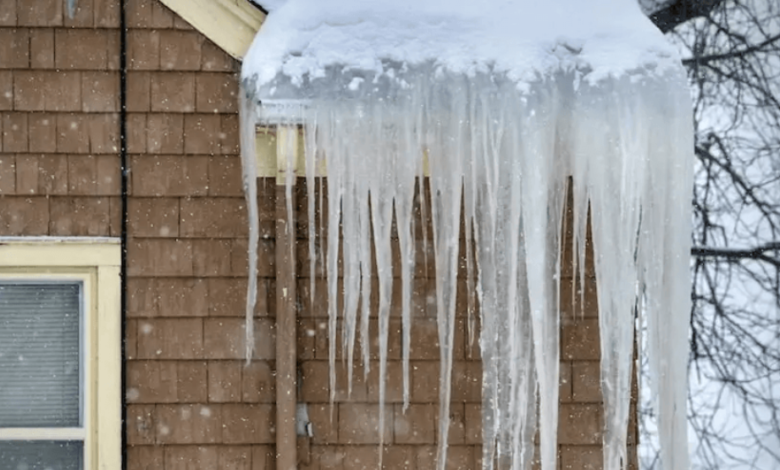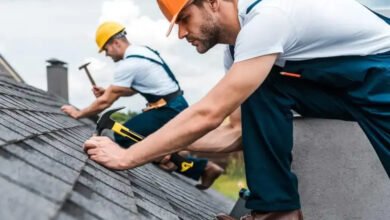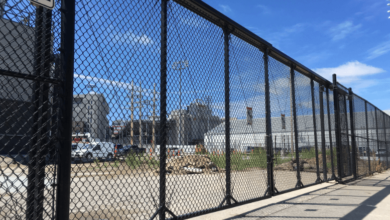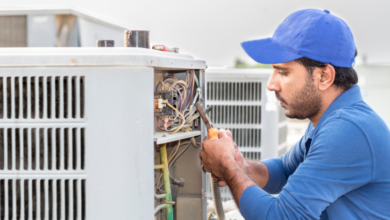Roof Ventilation Tips to Stop Ice Dams and Cut Heating Costs

Roof ventilation in Calgary means venting stale, moist air out of attics during Calgary’s cold winters and warm chinooks.
Correctly installed vents cut ice dams, mitigate the risk of mold, and allow roofs to last longer.
At Angel’s Roofing, we custom size intakes and exhausts for local codes, steep-slope homes, and flat commercial roofs.
We install top-of-the-line vents and safe install steps all year long.
For plain talk or a no-cost quote, find out more or book a visit now.
Calgary’s Unique Roof Challenges
Calgary’s climate takes a toll on roofs and makes ventilation something you need, not just something nice to have. Calgary’s unique roof challenges include heavy snow, arctic blasts, hailstorms, and chinook-driven deep freeze to thaw swings that can all hit in the same week. That flip-flop makes roofing materials expand and contract, then crack, leak, and age rapidly.
Strong winds and snow loads push air and moisture where they do harm. A properly sized and well-placed venting system keeps attic air circulating so heat and humidity don’t build up and turn nooks and crannies into nightmare junctions.
Extreme weather and ventilation needs
Freezing nights and mild afternoons drive condensation on roof decks. Summer sun bakes shingles and raises attic temperatures that cook underlayment. Calgary’s heavy snow and wind require passive exhaust to have clear paths and continuous intake at soffits so flow isn’t choked off.
The standard sizing guideline is 1 square foot of net free vent area per 300 square feet of attic floor, divided approximately half intake and half exhaust. For instance, an 1,800-square-foot attic requires approximately 6 square feet combined, split between ridge and soffit.
Ice dams, moisture, and early roof failure
Heat from warm attic air melts the snow covering on your roof, then refreezes at the cold eaves wall and forms ice dams that back water up under shingles. Inadequate ventilation leads to attic rain, damp insulation, and mold.
Wet decks rot and fasteners rust, prematurely ending the lives of roofs. A continuous ridge vent with matched soffit intake, baffles above insulation, and sealed bypasses around lights and ducts reduce melt lines and condensation.
See also: How Small Changes at Home Can Build a More Energy-Efficient Future
Materials, systems, and fit for Calgary
Choose solutions that address hail, snow load, and UV. Metal roofs shed snow beautifully and go hand-in-hand with ridge vents that keep out wind-driven snow. Impact-rated shingles and reflectors help with summer heat.
Install vent products with snow filters and wind baffles. In high-wind zones, augment with mechanical fastening and consider static vents with internal deflectors.
Maintenance and correct install
Keep soffits clear, replace crushed baffles and verify balanced intake to exhaust annually. After hail or a chinook cycle, check the ruler to ridge caps, seals and screens.
Ensure proper layout and airtight ceiling planes along with code-level insulation work with ventilation to stave off expensive fixes.
How Roof Ventilation Works
Roof ventilation circulates ambient air through the attic or beneath the roof deck to maintain temperature and moisture levels. In Calgary’s dry-cold winters and warm summers, this equilibrium safeguards shingles, insulation, and structure.
Intake and Exhaust: The Airflow Engine
They supplement intake vents at the eaves or soffit with exhaust ventilation at the roof ridge so airflow is continuous. The process is direct: intake vents sit at the roof’s lowest point, usually soffit vents, and exhaust vents sit at the peak, often ridge vents.
Hot air rises, sucks cooler air from the soffits, and escapes high through the ridge, similar to a ridge cap vent. If a full-length ridge cut isn’t optimal, then some roofs may have box, turbine, or low-profile vents, and in certain situations, numerous smaller holes instead of one long ridge penetration to accommodate truss layouts or intricate hips.
The rule of thumb is one square foot of net free vent area per 300 square feet of attic floor, split close to 50/50 between intake and exhaust.
Temperature Control in Calgary’s Climate
Good roof ventilation circulates air in your attic, keeping attic temperatures closer to outside levels. In summer, it flushes out heat that can drive up shingle temperatures and reduce service life and reduces stress on air conditioning.
In winter, it cuts down warm attic pockets that foster melt-freeze cycles along eaves. Stable attic temperature helps reduce ice dams that push water under shingles and ruin ceilings.
Moisture Management and Building Health
Balanced intake and exhaust eliminates moist air from showers, cooking or stack effect before it condenses on the roof deck. This aids in keeping it mold, mildew and wood rot free.
Continuous ridge vents provide a high, uniform outlet for warm, moist air. Gable or roof louvers can supplement when geometry requires.
Best Calgary Ventilation Systems
Calgary’s signature blend of deep cold, chinook swings, and heavy snowfall makes attic airflow a safety and cost concern. Proper vent design resists trapped heat, moisture, and ice and withstands high snow loads without clogging. Ideally, it provides consistent intake at the soffits and unimpeded, snow-safe exhaust at the ridge or high on the roof to reduce summer cooling bills and prevent winter attic rain and ice dams.
What Are the Top Roof Vent Options in Calgary?
- Ridge Vents: Clean look, even exhaust along the peak, work well with strong soffit intake. High-profile, snow-shedding designs are less likely to clog.
- Turbine Vents: Wind-driven draw that suits open areas and taller roofs. High-clearance models continue spinning over drift lines.
- Power Vents: Thermostat and humidistat controlled pull for hot or damp attics. Winter guards and backdraft dampers help during storms.
- Solar Vents: Eco-friendly option that removes heat and humidity.
Suitability table (benefit vs. Local weather): ridge is balanced exhaust and is best where snow grills are lower than peak. Turbine is powerful on blustery days and keeps neck tall for drifts. Power provides targeted moisture and heat control and requires weather-rated housings. Solar offers an awesome summer load drop, so choose models rated for cold starts and snow.
When to Choose Mechanical or High-Performance Static Vents
Complicated rooflines, low-pitch areas or snow-drift valleys require additional pull. We recommend snow-rated power vents or high-profile static vents located above drift zones with clear soffit intake.
Use baffles to prevent insulation from choking airflow and add raised flashings to shed ice.
Natural Vent Systems for Traditional Roofs
Combine gable vents with continuous soffit intake for uncomplicated, low-maintenance flow on gable roofs. Employ screened, insulated gable units and vented aluminum or uPVC soffits.
Keep a net free area ratio of 1 to 300 for balanced intake to exhaust and add baffles at eaves to stop wind wash.
Advanced Add‑Ons for Energy and Air Quality
Humidistat attic fans purge moisture after showers or cooking. Performance systems mix high-clearance exhaust, ridge intake baffles and smart controls to keep humidity in line and minimize summer AC run time.
Solar-powered fans add savings with no wiring and run great in Calgary sun.
The Insulation Connection
Insulation and roof ventilation have to function as a system in Calgary’s cold and dry winters and warm summers. The aim is consistent attic temperatures, dry air, and zero heat escaping that would ratchet up energy consumption.
What It Is and Why It Matters
Well insulated drags heat from living spaces into the attic at a slower rate, and ventilation pushes moist stale air out and pulls in dry air. Thin, gapped, or compressed insulation lets warm air leak up, cool on roof sheathing and turn into frost.
That melt can lead to attic rain, wet batts, sagging drywall and stained ceilings. Even the best vents won’t help when weak insulation and insulation connections allow moist air to sneak around the system, undermining efficacy and comfort.
This risk is greater in Calgary, where indoor air is frequently much warmer than the subzero outside.
Common Weak Points and How to Fix Them
The insulation connection is a common failure. Bath fan or dryer exhaust hoses not completely tied into the gooseneck vent spew hot, moist air into the attic. Gaps around pipes, light boxes and hatches contribute to the load.
Better yet, make the connection a tight, sealed joint at the gooseneck with clamps and foil tape. Then insulate and air-seal the path of the duct. Use sealed, rigid or insulated ducts, keep runs short and vent outdoors, not into soffits.
Maintain the connection: check seals each fall, re-tape if loose, and lubricate metal joints so clamps hold firm in freeze-thaw cycles.
Insulation Upgrades That Boost Ventilation
Top up attic insulation to local best practice with fiberglass batts or blown-in fiberglass or closed-cell spray foam at eaves and tricky joints to prevent condensation.
Baffle your soffits so air can blow above the insulation and air-seal the ceiling plane before you add additional. The bonus includes longer shingle and deck life, fewer ice dams, lower gas and power bills, steadier indoor temperatures, and quieter, cleaner air all year round.
Navigating Calgary Building Codes
Calgary roof ventilation needs to comply with the NBC-2023 AE, National Fire Code-2023 AE and City bylaws. The goal is simple: move air, reduce ice dams, and manage moisture without risking fire spread or heat loss.
Code Requirements and Vent Area
We used Calgary’s building codes, the NBC-2023 AE ratios for vent area. As a baseline, plan for a net free area (NFA) of 1:300 of the insulated ceiling area when a warm-side air/vapor barrier is continuous and sealed.
Use 1:150 if that barrier is missing, leaky, or the roof is low-slope. Split intake and exhaust around 60/40, with more intakes. Intake takes place at eaves or soffits, and exhaust at ridge or high on a sloped roof.
Avoid having vents in snow drifting zones and provide baffles to keep airflow above insulation at eaves.
Safety, Moisture, and Energy
Install non-combustible or approved vents proximate to fire-rated walls and party lines. Reseal attic air around chimneys and flues with code-listed flashings and clearances.
Combat moisture with sealed attic hatches, bath and kitchen fans vented outside, and vapor-tight fixture lights. Energy-wise, combine ventilation with continuous air sealing, raised heel trusses where feasible, and correct insulation depth to minimize heat loss and ice dam potential.
Why Certified Contractors Matter
Thus, licensed roofing contractors working to NBC-2023 AE and local inspection protocols minimize rework, prevent insurance claim denials associated with code violations, and preserve warranties.
Commercial spaces do not have a Business Licence issued if they do not pass NBC-2023 AE. Food can trigger Group E or Group A2 rules, NFPA 96 exhaust, grease interceptors in accordance with Wastewater Bylaw 14M2012, and barrier free design, all of which impact roof penetrations, vent routing, and inspections.
Tenant spaces 300 m2 or greater typically need stamped architectural, mechanical, and electrical drawings, with occupant load determined by the Fire Code.
Compliance Checklist
- Calculate NFA at 1:300 or 1:150 as required.
- Balance intake/exhaust; install baffles at eaves.
- Use approved vents; maintain fire clearances.
- Duct fans outdoors; seal attic bypasses.
- Protect against snow ingress and wind-driven rain.
- Submit proper permit drawings that indicate mechanical, plumbing, electrical, fire ratings, washrooms, and penetrations.
- Keep inspection records, product data, and installer credentials.
Assessing Your Home’s Needs
Determining your home’s needs begins by establishing a good understanding of existing attic ventilation, moisture control, and heat balance during Calgary’s dry-cold winters and warm chinook swings. A properly maintained system reduces energy consumption, prevents expensive repairs, and protects the roof all year long.
Check Your Attic for Airflow Problems
Search for hot or cold spots between rooms, uneven snow melt on shingles, musty odors, rusted nails or dark staining on sheathing. Notice frost or wet insulation following cold snaps, damp roof boards, and obvious mold on rafters.
In summer, take attic temperatures. If they remain significantly above outdoor air, intake or exhaust is probably short. Be on the lookout for ice dams along eaves in mid-winter. They are a sure sign of warm attic air, poor air seal, or inadequate exhaust.
Inspect soffit vents for paint block, dust, or bird nests. Make sure bath fans and kitchen vents duct outside, not into the attic.
List the Right Inputs Before You Decide
- List roof type (asphalt, metal, low-slope)
- Attic size in square metres
- Soffit length and insulation depth in centimetres
- Include home age, recent upgrades, and usage (home office, new occupants, high shower usage)
- Flag climate factors: long freeze periods, chinook thaw cycles, wildfire smoke events, and hail risk common in Calgary
- Note energy goals: lower winter bills, reduce summer heat load, control humidity, or protect shingles
Book a Professional Inspection
Book a roof and attic inspection to identify ventilation leaks, ice-dam potential, leaky penetrations, and insulation gaps. Request intake-to-exhaust balance, net free area calculations, baffle checks at eaves, air sealing at attic bypasses, and IR scans for cold bridges.
A pro report will help you establish a maintenance plan and prioritize fixes before they become big.
Match Products and Methods to Your Roof
Select solutions that fit structure and weather: continuous soffit intake with ridge vents for gable roofs, static or hybrid exhaust on hips, and code-fit baffles to keep insulation off eaves.
Sealed bath fan ducts should go to the exterior, and smart vents are necessary where soffits are short and balanced NFA sizing. Opt for hail-rated vents, wildlife screens, and airtight attic hatches to promote energy savings and reduce moisture and pest threats.
Conclusion
Calgary roofs endure big swings in heat and cold. Proper venting preserves the deck and insulation by keeping them dry, trims ice dams, and helps your attic breathe. Combine smart vents with a tight attic air seal and the appropriate R-value. Yes, meet code but design for our chinooks and cold snaps. A ridge vent combined with balanced soffit intake, for example, works well on most Calgary homes. For low-slope or complex roofs, opt for high-cap box vents or a hybrid strategy.
Angel’s Roofing has over 25 years of experience on Calgary roofs. Our crew inspects your attic, quantifies airflow, and maps out a transparent solution. No fluff. Just down to earth, no frills, honest work and a reasonable price.
Set to reduce heat loss and prevent frost. Call Angel’s Roofing in Calgary, get a free estimate or book a site check today!




